
Winter blues got you down? You’re not alone! At least you can mentally prepare for warmer weather with this handy guide, which should help you get the best-looking lawn once the snow melts this spring. There’s a lot to do to ensure your lawn comes in lush and green, and we’re walking you through our spring preparation guide with step-by-step instructions and lawn care tips!
Geographical Factors in Spring Lawn Preparation
It’s a good idea to get an early start on your spring grass treatment, but how early is too early? It’s important to note that starting the fertilizing and mowing process too soon in the season can actually hurt your grass. Plus, you run the risk of creating the perfect growing environment for pesky weeds.
The biggest challenge is knowing when it’s the best time to start preparing so that you can get everything on your spring to-do list done. Factors like geographical location, climate zone, and grass type can all influence the timing of your routine.
Recognizing Your Climate Zone
Recognizing your climate zone is one of the most important factors in determining when you should start your spring lawn care. After all, the climate here in Florida is vastly different from that of our friends in the north, so your mileage may vary depending on how early your region starts to defrost.
Your climate zone influences the type of grass you’re growing and how cold temperatures get in the winter. Plus, different climate regions have different soil types, which can present their own challenges.
Warm-Season vs. Cool-Season Grasses
In the warmer parts of the United States, it’s common to find warm-season grasses such as zoysia and Bermuda. In colder regions, you’ll more likely find species like perennial ryegrass, Kentucky bluegrass, and fescues.
Kentucky bluegrass and tall fescues are a couple of examples of grass types that tolerate both warm and cold climate regions. However, in some dryer areas, buffalo grass is more common.
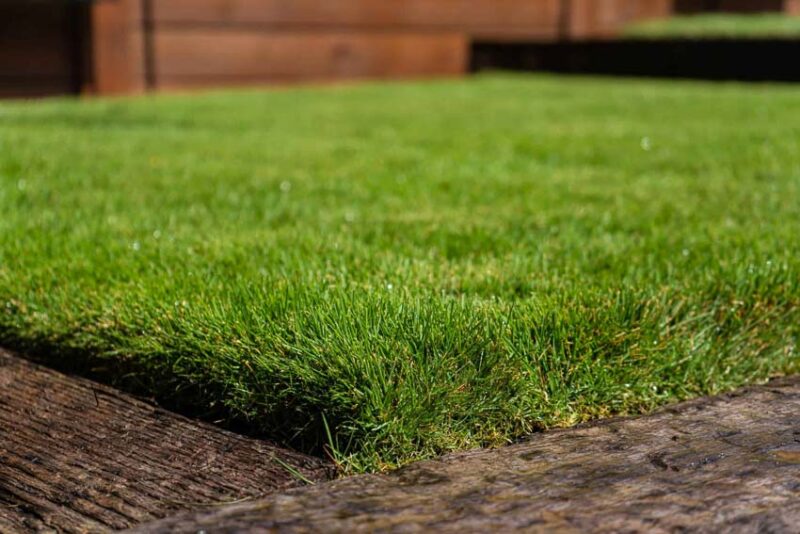
Different grass types have different responses and tolerances to seasonal weather patterns. Both warm and cool-season grasses will go dormant in the winter, turning brown when the temperatures start to drop.
Typical Spring Weather Patterns
Once spring comes back around, the temperatures start to climb again and your grass starts to return to its green color. However, the timing of that depends on the weather patterns in your region.
In warmer climate zones, your grass may start to grow in February, March, or April, making it difficult to tell when you should start mowing. Some people start mowing when they see lilac bushes start to bloom, but you can also use soil temperatures as a guide.
Regardless of what type of grass is in your yard or what climate zone you’re in, grass starts to grow when soil temps reach 65°F (18°C). At this point, your lawn is ready for mowing, fertilizing, and watering.
One thing to be on the lookout for when prepping your lawn for spring is cold snaps early in the season. Especially for northern regions, mowing your lawn too early can set back your progress if it gets hit by a cold snap. If necessary, wait a couple of weeks into spring to ensure you’re not getting ahead of any last dregs of winter.
Soil Composition and Drainage Concerns
A lush, green lawn starts with healthy and well-drained soil. Here are some spring lawn care tips to help you address and evaluate soil changes between seasons.
Evaluating Soil Types and Their Needs
The most foolproof way to evaluate your soil health is to use a soil test kit. These kits help determine the pH of your soil and the levels of nutrients present. Depending on your soil’s health, it might not be enough to simply add fertilizer to bring it up to par.
Grass is a heavy feeder, so top-dressing your lawn with compost or topsoil is a good idea to start introducing important nutrients. It’s also important to ensure good drainage throughout your lawn to avoid issues with standing water, soil compaction, and erosion.
Addressing Regional Soil Challenges
Depending on your climate region, your soil may be either acidic or alkaline. Grass grows best with a pH level between 6.0 and 7.0. Any level outside of this range will affect the soil’s availability of nutrients, making it difficult for anything but weeds to grow.
Make sure to address soil issues annually, since overwatering or overfertilizing your lawn can sometimes leave your soil acidic. One helpful trick to neutralize the pH in your soil is to add a lime treatment to your lawn care routine.
Some regions, like the Pacific Northwest, have alkaline soils. To correct an alkaline soil pH level, try adding elemental sulfur, iron sulfate, or aluminum sulfate.
Why It’s Important to Prepare Your Lawn and Yard for Spring
Preparing your lawn in the spring is essential to giving it a healthy start to the growing season. Spring brings a critical growth phase for most lawn types, and it’s also the best time of year to take steps like weed, disease, and pest prevention.
Spring: A Critical Growth Phase
As the earth starts to awaken from the winter frost, your grass isn’t the only thing starting to come to life. Warmer weather can often be a catalyst for weeds, insects, and fungal diseases that threaten your lawn’s health.
This flourishment of grass growth signals that you should pay attention to the needs of your lawn to capitalize on the spring growth surge.
Preventing Diseases and Pests
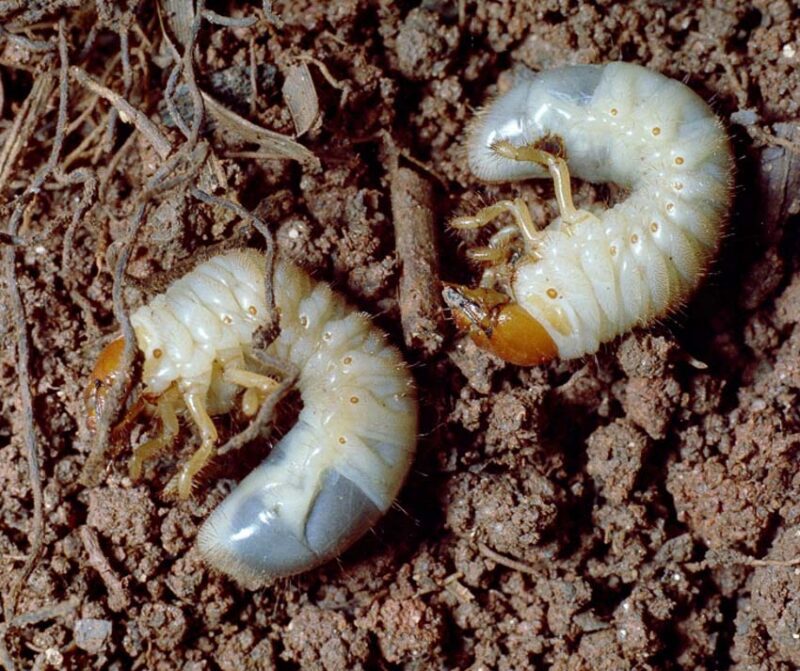
You should take steps to ensure your lawn is ready for new growth as temperatures rise to combat various lawn threats. These weather conditions are also ideal for diseases and pests to thrive, so addressing these issues directly can help thwart them. Fungicides and insecticides are a couple of examples of steps you can take to help prevent harm to your lawn.
If these issues are left untreated, it can set your growth progress back, and possibly cause a season-long struggle. Some common threats to your lawn’s health include:
- Fungal diseases like snow mold
- Brown patch fungus
- Lawn grubs and beetles
- Cutworms
- Ants
Additionally, problems caused by moles, voles, and gophers may require you to do some spring cleanup. In these cases, natural methods can do wonders to rid your lawn of pests and protect your property from their destructive habits.
Benefits of Preparing Your Lawn for Spring
Keep in mind that what works for someone else’s lawn health may not work for you and your yard. The key is to keep trying, and each year you will learn something new about your yard’s needs to ensure spring growth goes off without a hitch.
A Vibrant and Thriving Yard
Not only is spring preparation ideal for lawn health, it can also enhance your home’s curb appeal. Plus, you’ll be able to more easily use your yard for outdoor activities, like family recreation and backyard barbeques.
You can help your lawn develop strong roots by giving it exactly what it needs when it wakes up from its winter slumber. Plus, a lawn with a healthy root system can compete with weeds for nutrient absorption and become more tolerant to summer heat, leaving your grass lush and green all summer.
Cost-Effective Lawn Maintenance
Getting ahead of spring lawn maintenance can help you avoid problems like out-of-control weeds, which can be costly to remedy. The earlier you take action, the better you can ensure that your lawn stays healthy, and also allows you to make efficient use of water and other resources.
For instance, aerating your lawn can improve drainage so that the water absorbed into the soil stays clear of sidewalks and driveways. This process also increases fertilizer uptake, which means your lawn won’t waste fertilizer.
Promoting Eco-Friendly Practices
Many homeowners seek environmentally friendly lawn care solutions that reduce chemical dependency and help encourage biodiversity in their lawns. There are several eco-friendly ways to combat lawn pests and diseases, but be sure to start these processes in a timely manner.
One such example to avoid using harsh chemicals on your grass is to use corn gluten as a pre-emergent herbicide. Corn gluten is safe on your lawn, and when applied at the right time, can reduce the amount of weeds that you’ll need to pull later in the season.
Step-by-Step: How to Prepare Your Lawn for Spring
We’ve compiled several spring lawn care tips to help you prepare your yard for spring to make this one of the best growing seasons ever.
Cleaning and Initial Assessments
When is the right time to start spring lawn maintenance? You should wait for your lawn to dry enough so you can walk on it without causing any damage. Then, start by cleaning your yard and performing initial assessments to determine your grass’s condition.
Debris Removal and Raking
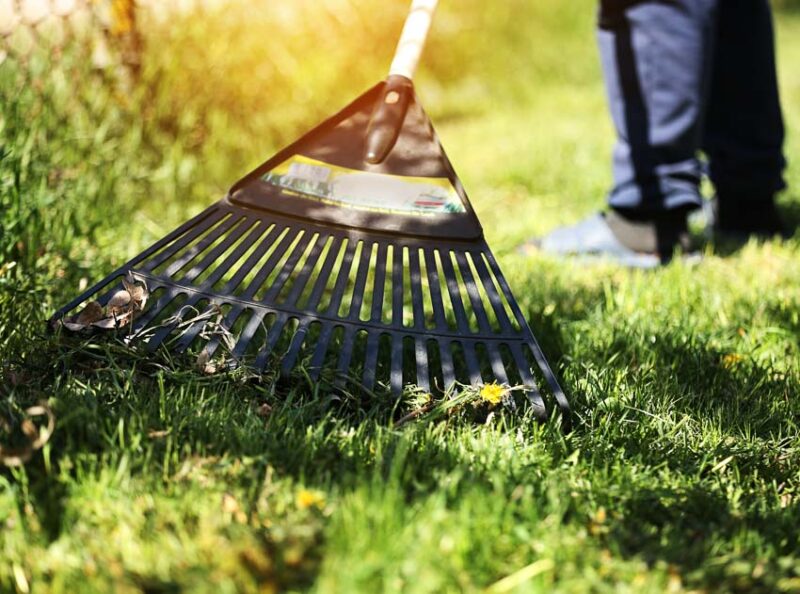
Basic lawn rakes and a trusty leaf blower are two great tools to start with to remove debris from your landscape beds and lawn. Your yard can get pretty messy over the winter, so it’s important to remove sticks and fallen leaves so that your lawn can grow unobstructed.
Checking for Thatch and Compaction
Spring is a great time to start dethatching your lawn. To check the level of thatch present, you can use your shovel to dig out a cross-section of soil and then measure how much thatch you have. If you see more than half an inch, you should dethatch before continuing your lawn maintenance.
Aeration and Seeding
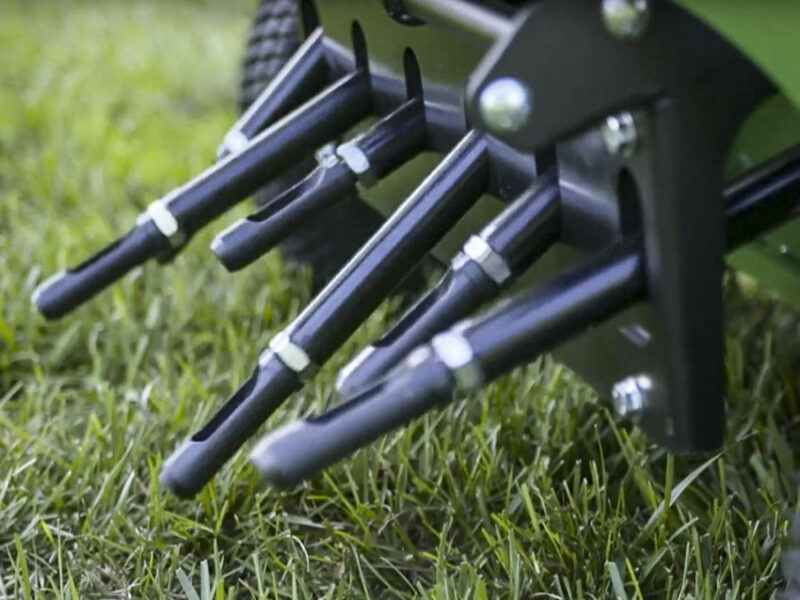
Spring is also an excellent time to aerate your lawn. This can also present a good opportunity to plant a new lawn or overseed your existing grass.
Benefits of Lawn Aeration
Lawn aeration can improve your soil’s drainage level, which lets water drain and provides oxygen to your grass roots. This process is important to the overall health of your lawn.
Overseeding for a Lush Appearance
Since spring is a good time to plant grass seed, you can overseed your lawn after aerating for a fuller lawn. Keep in mind to time your pre-emergent herbicide applications so you don’t affect seed germination.
If you do decide to overseed your lawn in the spring, the best practice is to use traditional grass planting methods, or consider hydroseeding to increase the rate of germination and to keep the seed in place.
Fertilizing and Soil Conditioning
If you want to provide your lawn with a boost of nutrients to start the growing season, you should fertilize your lawn in the spring. This is also a good time to add fertilizer and pH balancer to your lawn.
Choose a spring fertilizer that’s high in nitrogen to promote quick greening. It’s important to note that too much fertilizer can actually hurt your lawn, so make sure to apply the recommended amount.
Balancing your soil’s pH in the spring is also a good idea. You can do this by adding soil conditioners like lime (if your soil is too acidic) or elemental sulfur (if it’s too alkaline).
Watering Techniques and Schedule
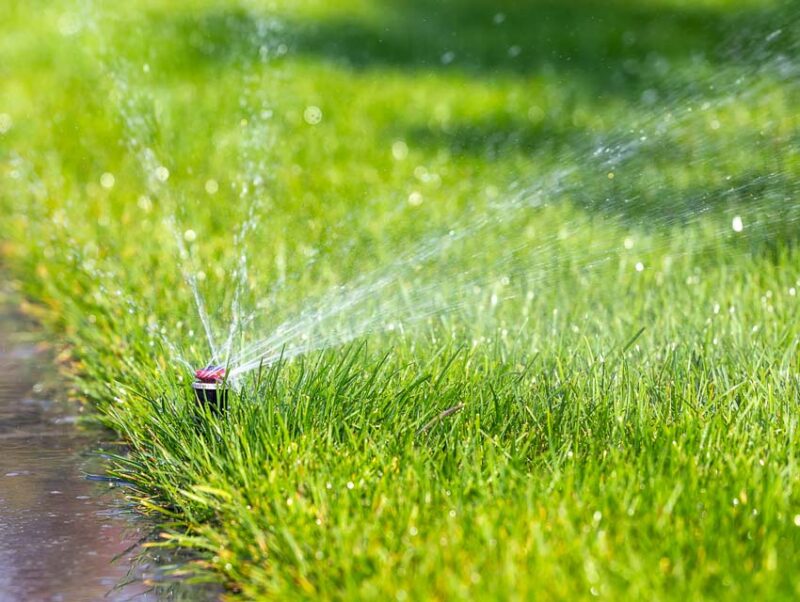
To encourage a deep root system, starting off the season with the right watering techniques can do wonders. Maintaining a consistent watering schedule makes your lawn more heat and drought-tolerant.
Your lawn requires about 1 to 1.5 inches of water per week, including rainwater. You can use a rain gauge to monitor and spread the remaining water requirements throughout your lawn about twice per week. Be sure to avoid overwatering, though, as it can bring problems like fungal diseases or runoff issues.
FAQs About Preparing Your Lawn for Spring
When should I start my spring lawn preparations?
Your geographical location plays the most part in determining when you should start spring lawn preparations. In some warmer climates, you can safely start as early as February. In cooler regions, you should wait until late March or April before you should start your lawn care schedule to ensure the final cold snaps are out of the way.
Can I use my fall fertilizer in the spring?
Fall and winter fertilizers are formulated for dormant lawns, so they don’t contain as much nitrogen as your lawn needs in the spring. During the growing season, your grass will grow quickly, and it needs a lot of nitrogen to stay green. It’s better to use a spring-formulated fertilizer in the spring to provide much-needed nutrients.
How often should I mow my lawn during early spring?
During peak growing conditions in the early spring, you may need to mow your lawn every four or five days, and sometimes as frequently as twice per week. Your mowing frequency depends on how fast your lawn grows, which can fluctuate throughout the growing season.
Should I be concerned about spring lawn diseases?
Because conditions are usually wet and damp in the spring, it’s common to see lawn diseases during this time. You may see problems get worse if your lawn suffers from excess thatch, compacted soil, or overwatering due to excess rain.
Can I water my lawn during midday in spring?
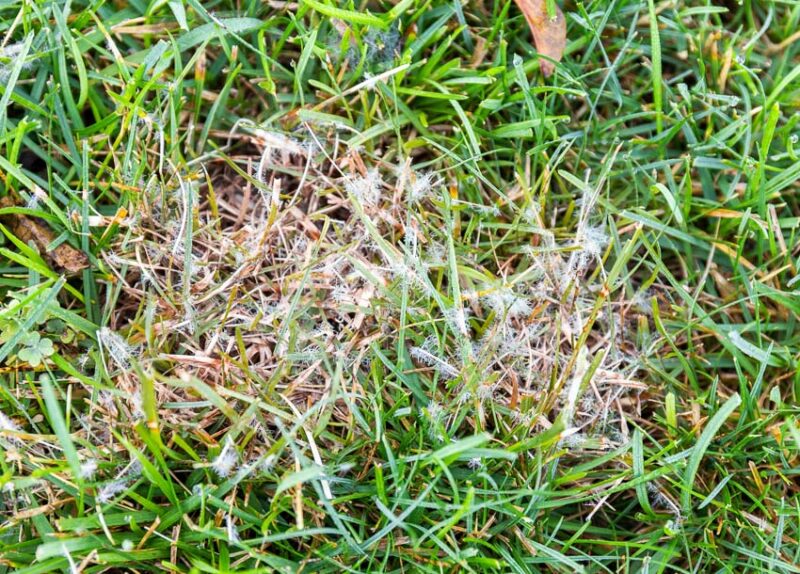
Because your lawn needs a chance to dry before it gets too late in the day, the best time to water your grass is early in the day. Aiming to water your lawn before 10 a.m. can help avoid problems like grass fungus from excess moisture.






